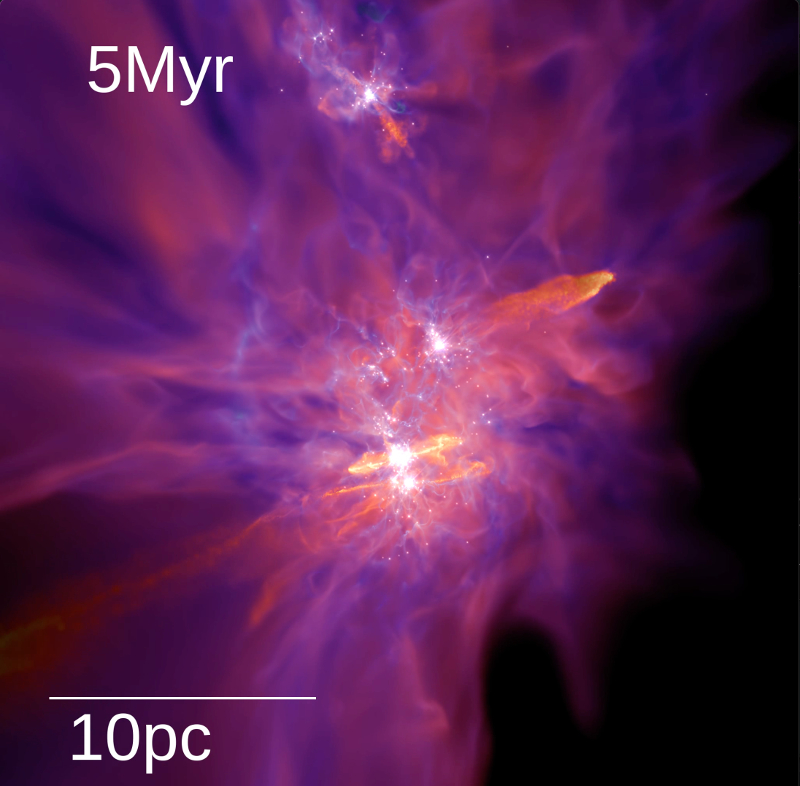| EPoS Contribution |
|
The dynamics of star formation with all feedback in concert
Mike Grudich Carnegie Obs, Pasadena, US | |
| Star formation has historically been challenging to model due to the multitude of physical processes involved. STARFORGE is the first numerical framework for 3D radiation MHD simulations of star-forming GMCs that follows the formation, accretion, motion, and feedback of individual stars self-consistently, with all feedback mechanisms (jets, winds, radiation, and SNe) in concert. Using this framework, we have simulated a 20,000 solar mass GMC from initial turbulent collapse, through star formation, and onward to cloud disruption and the termination of star formation. I will detail the evolution of the global properties of the cloud, the star cluster, and feedback throughout this sequence. Each feedback mechanism is dynamically relevant in its own way, and we isolate different respective effects upon the IMF and cloud evolution. The IMF agrees with observations if and only if multiple feedback channels are accounted for. Radiation from massive stars is chiefly responsible for disrupting the cloud through HII region expansion, resulting in a final star formation efficiency of 8%. Analyzing where and when stars get their mass, low-mass stars form mainly from a pre-existing bound core with, while massive stars form mainly from subsequent accretion from 1pc+ scales over 1Myr+. This picture of star formation has numerous implications for the modeling of feedback and the interpretation of observations of young star clusters. | |
 | |
| Caption: Rendering of a simulated 20,000 Msun giant molecular cloud - lightness encodes surface density (lighter is denser), color encodes line-of-sight velocity dispersion (purple is 0.1km/s, yellow is 10km/s). | |
| Collaborators: D. Guszejnov, UT, US S. Offner, UT, US C.-A. Faucher-Giguere, NU, US P. Hopkins, CIT, US A. Rosen, CfA, US A. Raju, UT, US |
Key publication
Suggested Session: Turbulence & Cloud Dynamics |

